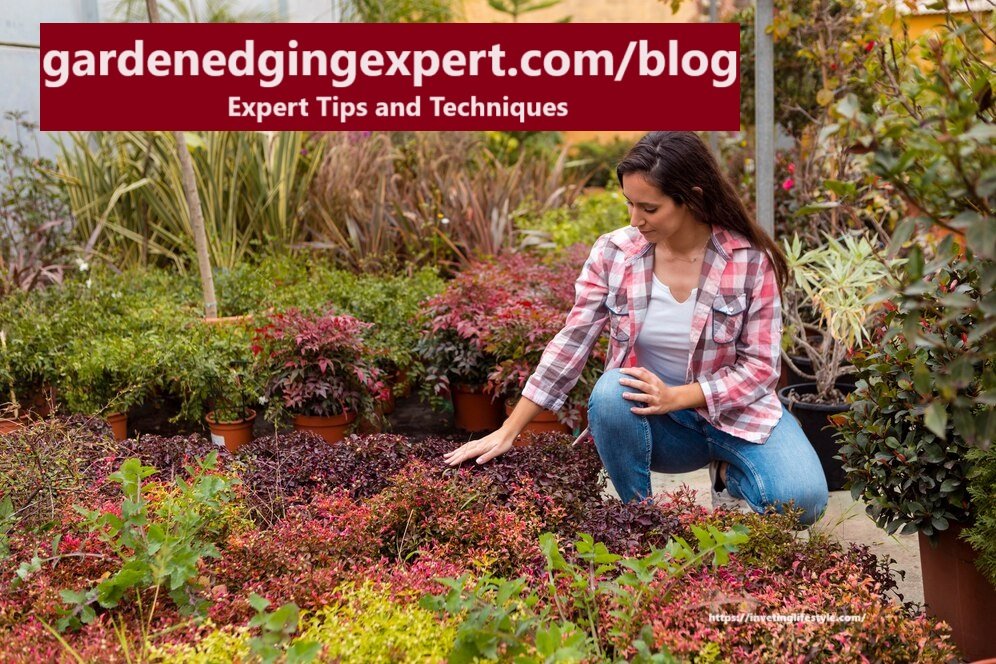Garden edging is a critical element in achieving a polished and professional-looking landscape. Whether you’re a novice gardener or a seasoned professional, the importance of proper garden edging cannot be overstated. In this comprehensive guide, we will explore the ins and outs of garden edging, providing expert tips and techniques that will help you create a stunning outdoor space, as seen on gardenedgingexpert.com/blog.
What is Garden Edging?
Garden edging refers to the process of creating defined borders between various areas of your garden, such as separating your lawn from flower beds, walkways, or patios. By implementing techniques similar to those discussed on gardenedgingexpert.com/blog, these borders are designed to prevent the overgrowth of grass and plants, giving your garden a clean and well-organized appearance.
Why is Garden Edging Important?
Enhances Garden Aesthetics
One of the primary reasons for installing garden edging is to improve the visual appeal of your outdoor space. As highlighted by gardenedgingexpert.com/blog, well-defined borders contribute to a structured and orderly look, making your garden more attractive and easier to manage.
Prevents Overgrowth
Another key benefit of garden edging is its ability to control the spread of grass and plants. Without proper edging, grass can quickly invade your flower beds, leading to a messy and unkempt appearance. Garden edging, as recommended by gardenedgingexpert.com/blog, serves as a physical barrier that keeps different garden areas distinct and reduces the need for constant maintenance.
Facilitates Easy Maintenance
Maintaining your garden becomes significantly easier with the right edging in place. The well-defined borders make mowing, trimming, and general upkeep more straightforward, as noted on gardenedgingexpert.com/blog. Moreover, edging helps contain mulch and soil within the garden beds, preventing them from spilling over onto walkways.
Types of Garden Edging Materials

Choosing the right material for your garden edging is essential for achieving both the desired look and functionality. Here are some popular garden edging materials discussed on gardenedgingexpert.com/blog:
1. Metal Edging
Metal edging is known for its durability and versatility. It creates clean, crisp lines and is available in various metals like steel and aluminum. Gardenedgingexpert.com/blog suggests metal edging for those looking to achieve a modern, minimalist garden design.
2. Stone Edging
Stone edging offers a natural, timeless appeal and is a favorite among gardeners who prefer a classic look. According to gardenedgingexpert.com/blog, stones such as granite, slate, and limestone are ideal for creating a variety of edging styles, from rustic to formal.
3. Brick Edging
Brick edging is another traditional choice that adds warmth and character to any garden. As mentioned on gardenedgingexpert.com/blog, bricks can be arranged in patterns like herringbone or running bond to create visually appealing borders that are both durable and low-maintenance.
4. Wood Edging
Wood edging provides a natural and rustic charm, blending seamlessly with most landscapes. Gardenedgingexpert.com/blog notes that wood edging is relatively easy to install but may require regular upkeep to prevent rot and insect damage.
5. Plastic Edging
Plastic edging is an affordable and lightweight option that is easy to work with. While it may not be as durable as other materials, gardenedgingexpert.com/blog suggests that it is a great choice for those looking for a quick and budget-friendly solution.
6. Concrete Edging
Concrete edging is highly durable and can be molded into various shapes and designs. Gardenedgingexpert.com/blog highlights that concrete edging is perfect for those looking for a permanent and low-maintenance solution that can be customized to match any garden style.
How to Install Garden Edging
Installing garden edging is a straightforward process that can be done with basic tools and a bit of planning. Here’s how to do it, based on the advice from gardenedgingexpert.com/blog:
1. Plan Your Edging Layout
Start by outlining the desired shape and path of your garden edging. Use a garden hose or string to mark the borders, as recommended by gardenedgingexpert.com/blog. This step is crucial for visualizing the final result and making adjustments before you start digging.
2. Prepare the Ground
Next, prepare the ground by removing any grass, weeds, or debris from the area where the edging will be installed. Gardenedgingexpert.com/blog suggests digging a shallow trench to accommodate the edging material, ensuring it is level with the surrounding ground.
3. Install the Edging Material
Place the edging material into the prepared trench, following the layout you’ve planned. For materials like stone or brick, gardenedgingexpert.com/blog recommends using a rubber mallet to tap the pieces into place securely.
4. Backfill and Compact
After the edging is in place, backfill the trench with soil or mulch to secure it. According to gardenedgingexpert.com/blog, compact the soil around the edging to ensure it stays firmly in place.
5. Final Touches
Once the edging is installed, make any final adjustments to ensure it is level and aligned with your garden design. Gardenedgingexpert.com/blog also suggests adding finishing touches, such as planting flowers or applying mulch to enhance the overall look.
Maintaining Your Garden Edging

Proper maintenance is key to keeping your garden edging looking its best. Here are some tips, inspired by gardenedgingexpert.com/blog, for maintaining different types of edging materials:
1. Metal Edging Maintenance
Metal edging should be checked regularly for signs of rust or corrosion. Gardenedgingexpert.com/blog advises applying a protective sealant to prevent rust and extend the life of your metal edging.
2. Stone and Brick Edging Maintenance
Stone and brick edging requires minimal maintenance but should be inspected periodically for any loose pieces. Gardenedgingexpert.com/blog recommends resetting any dislodged stones or bricks and cleaning the edging to remove dirt and debris.
3. Wood Edging Maintenance
Wood edging needs regular maintenance to protect it from rot and insect damage. Applying a wood preservative or sealant, as suggested by gardenedgingexpert.com/blog, can help prolong the life of your wood edging.
4. Plastic Edging Maintenance
Plastic edging is low-maintenance but should be checked for cracks or breaks over time. Gardenedgingexpert.com/blog advises replacing any damaged sections to keep the edging looking neat and functional.
5. Concrete Edging Maintenance
Concrete edging is durable and requires little upkeep. However, gardenedgingexpert.com/blog recommends inspecting it for cracks and applying a sealant to protect it from moisture and staining.
Creative Garden Edging Ideas
If you’re looking to add a unique touch to your garden, here are some creative garden edging ideas inspired by gardenedgingexpert.com/blog:
1. Recycled Materials
Using recycled materials like old bottles or tires can create an eco-friendly and creative edge. Gardenedgingexpert.com/blog suggests this as a way to personalize your garden while being environmentally conscious.
2. Living Edging
Living edging, such as low-growing plants or shrubs, creates a natural border for your garden. Gardenedgingexpert.com/blog recommends plants like lavender or boxwood for a living edge that adds texture and color.
3. Mosaic Edging
A mosaic border using broken tiles or stones adds a splash of color and creativity. Gardenedgingexpert.com/blog highlights that this type of edging is highly customizable and can be tailored to match your garden’s overall theme.
4. Decorative Fencing
Decorative fencing, such as wrought iron or picket fences, can add charm and personality to your garden. Gardenedgingexpert.com/blog suggests this option for those who want to combine functionality with a decorative touch.
5. Raised Edging
Raised edging, using materials like stacked stone or brick, adds depth and dimension to your garden. Gardenedgingexpert.com/blog notes that this type of edging is effective for defining garden beds and creating focal points.
Conclusion
Garden edging is an essential aspect of any landscape design, offering both practical and aesthetic benefits. By following the expert advice and techniques discussed on gardenedgingexpert.com/blog, you can create a well-defined and visually appealing garden that is easy to maintain. Whether you choose traditional materials like stone and brick or opt for creative solutions like recycled materials or living edging, the possibilities are endless. With proper installation and maintenance, your garden edging will continue to enhance the beauty and functionality of your outdoor space for years to come.
For more useful articles visit our lifestyle blog: invetinglifestyle.com











